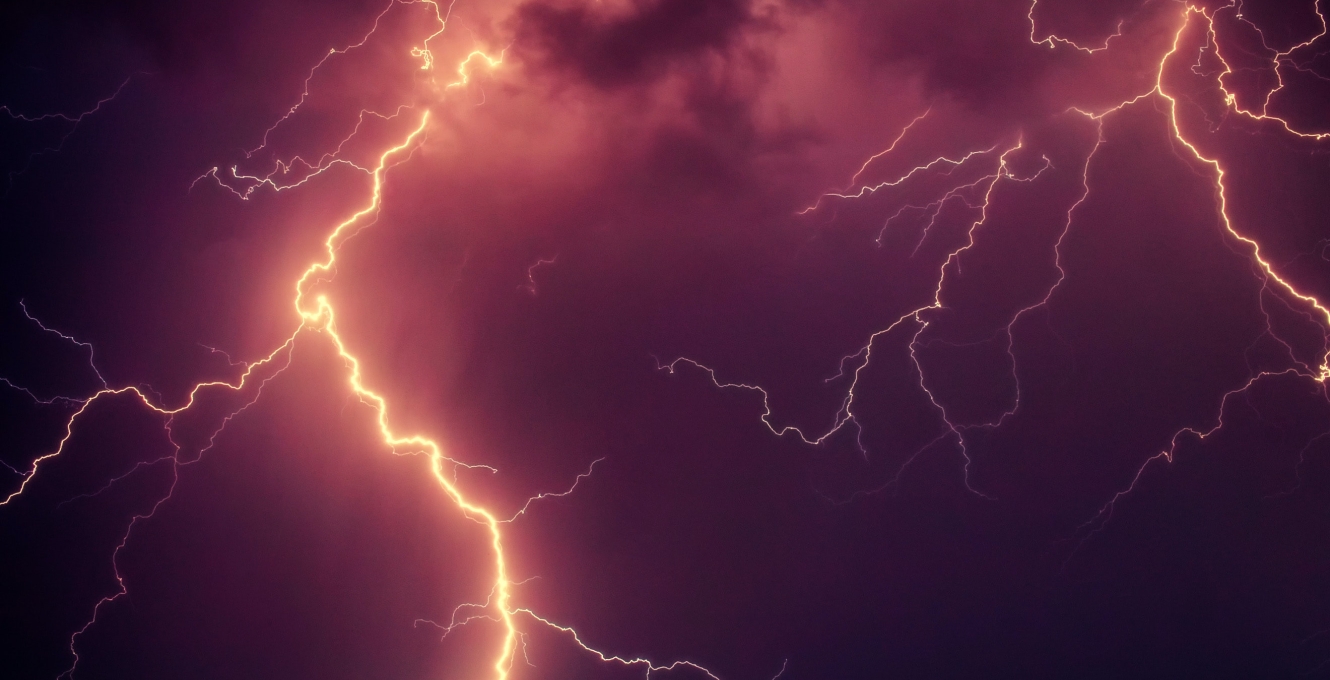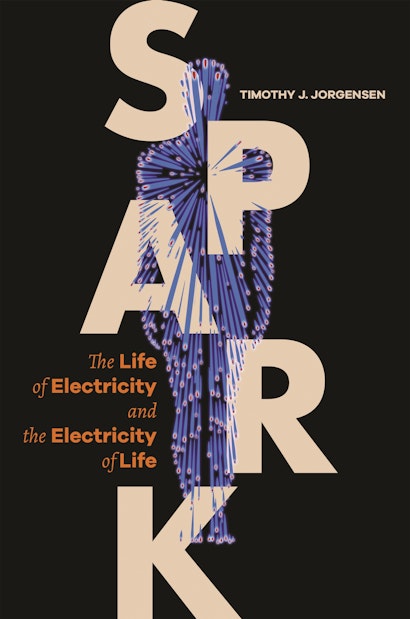June 19–25, 2022 is Lightning Safety Awareness Week—an annual public safety campaign of the National Weather Service. The campaign was initiated in 2001 to highlight the fact that lightning has killed more Americans than any other weather factor. The goal of the campaign is to raise people’s consciousness about the threat that lightning poses to their lives and to encourage them to avoid risky behaviors. The biggest lightning risk is being outdoors, so it’s not surprising that the campaign’s slogan is: “When Thunder Roars, Go Indoors.”
It’s hard to measure the effectiveness of the campaign in saving human lives, but lightning fatalities have dropped significantly over the last two decades to the point where lightning deaths in the United States currently are only about 25 per year, suggesting that the campaign’s message is getting out. But the lightning story for animals hasn’t been nearly as good. They are continuing to suffer the effects of lightning. Wild animals don’t have the option of going indoors. So animals, particularly large animals, are at higher risk of lightning death than humans.
As I report in my book Spark: The Life of Electricity and the Electricity of Life, the most dramatic example of how catastrophic lightning can be for animals comes from a reindeer herd. In the summer of 2016, an entire herd of 323 animals was struck dead by lightning.1 The herd lived on a mountain plateau called the Hardangervidda in a remote area of a Norwegian national park that is home to more than 10,000 wild reindeer. Government wildlife officials discovered a large cluster of recently killed animals while patrolling the area for hunter activity. An investigation suggested lightning had killed them. Reindeer are known to huddle together for safety, and the thunderstorm may have caused them to huddle even closer than normal out of fear. Unfortunately, all that huddling put the whole herd at elevated risk. If the reindeer had spread themselves out, it wouldn’t have been possible for a single bolt of lightning to kill them all.
But it isn’t just wild animals that are threatened. You’ve likely heard the expression: “Too dumb to come in from the rain.” Although horses often will head for the barn when it starts to rain, cows seldom do. As a consequence, cows are the farm animals most likely to have an encounter with lightning. Cow casualties from lightning strikes in the United States aren’t very high, but when such strikes do occur they can be devastating for an individual farmer. That’s because cows, like reindeer, often huddle together. Losses of 10 to 30 cows at a time are regularly reported, which is a big enough threat to the survival of the business that some farmers carry insurance on their cows against lightning death.
There are a couple of other reasons, besides huddling, that put grazing animals at higher risk of lightning death. First, they are typically standing in a treeless field (or huddled under a lone tree), making them the highest objects around. Their height above ground means they are more susceptible to a direct strike by lightning, which often hits the highest object in the vicinity.
Given the risk associated with height, you might suspect that among grazing animals, giraffes would be at particularly high risk. Although no one is methodically tracking giraffe lightning deaths, anecdotal evidence suggests giraffes are more susceptible to lightning. All three of the giraffes on the Rhino and Lion Reserve near Krugersdorp, South Africa, were struck by lightning at one time or another between 1996 and 1999, resulting in the deaths of two of the three.2 In 2003, a quickly moving thunderstorm descended upon Walt Disney World’s Animal Kingdom in Florida, leaving little time for the keepers to move the animals indoors. The only animal struck by lightning was Betsy the giraffe who, unfortunately, didn’t survive the experience.3 And in June of 2019, two giraffes were killed by a thunderstorm passing over Lion Country Safari Park in Loxahatchee, Florida. A park official called it a “billion-to-one” freak accident, and the park’s wildlife director Brian Dowling remarked, “This was just an act of Mother Nature that we couldn’t stop; we couldn’t alter how that came about.”4 But a “billion-to-one” seems like a gross underestimate of the risk. Experience tells us giraffes are likely targets for lighting, the state of Florida tops the nation for the frequency of thunderstorms, and summer is the riskiest season for lightning deaths. The inability to intervene is also a questionable claim; we now have very effective ways to reduce the risk from lightning strikes. The park needs to call in a lightning protection consultant, to help prevent another “billion-to-one” accident from killing any more giraffes.
The second reason grazing animals are at risk is that they are standing on four well-separated legs. The further the legs are apart, the greater the difference in ground voltage between one leg and another. A difference in voltage is what drives amps of current through the circuit. When lightning kills a large group of animals, such as those reindeer in Norway, it is typically ground current, rather than a direct strike, that’s the culprit. In effect, the animals’ legs can act like electrodes to complete an electrical circuit from the ground, through their bodies, and back to the ground. A portion of a pulse of electricity moving across the surface of the ground first encounters one foot and may then decide to take a little side trip up one leg and through the animal’s torso before exiting back down to the ground via another leg. The greater the distance between any two legs, the greater the chance of death or injury.
A standing human luckily has but two legs, and consequently can make just a single circuit with ground, and humans can reduce their risk of death from ground current even further by bringing both legs tightly together, thus forming just a single electrode with no circuit back to the ground.5 Humans can pull off this merged leg trick with little difficulty.6 But as you know if you’ve ever seen a calf-roping event at a rodeo, when a cow has its four legs brought together, it falls over.
It is indeed unfortunate that animals haven’t enjoyed the benefits of increased lightning awareness. But, at least, we humans seem to be taking heed of the life-threating dangers lightning, suffering fewer and fewer lightning deaths each year.
Timothy J. Jorgensen is professor of radiation medicine and director of the Health Physics Graduate Program at Georgetown University. He is the author of the award-winning book Strange Glow: The Story of Radiation (Princeton). He lives in Rockville, Maryland. Twitter @Tim_Jorgensen
Notes
1. https://www.theverge.com/2016/8/29/12690402/lightning-strike-kills-norway-reindeer-death-why-science
2. http://scienceblogs.com/tetrapodzoology/2009/07/15/mammal-deaths-by-lightning/
4. WPEC CBS12 Television News; June 11, 2019.
5. Andrews C.J. et al. “Lightning injury — a review of clinical aspects, pathophysiology, and treatment.”
6. This little leg maneuver may give you some protection from a ground current, but you’re no better protected from a direct strike, which likely will enter through your head on its way to the ground.

